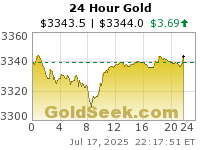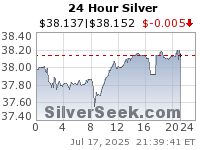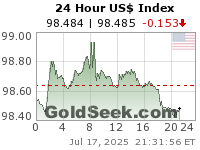The gold price is set for a period of consolidation following profit taking and position squaring, while the state of credit markets remains important.
The recent correction in the gold price has been more a function of profit taking and position squaring than a function of the state of the credit markets. After testing $830 in the final week of October, gold then retreated towards $770 before bouncing slightly as speculative positions were closed. This was extended by selling in relation to the options markets when the November options went off the board, as there has been sizeable exposure at both $800 and $850. It is arguable therefore, that a lot of speculative froth has been blown off the market and that the ground is being laid for a recovery, but this may yet take a little while to develop. The prognosis is positive for the New Year, but with the year-end approaching there is a distinct possibility that there is more position cutting to be done. There is increasing resistance at $800, both on a psychological and technical basis.
Gold's most recent retreat coincided with a reduction in the CboE VIX uncertainty index over the last week of November from just less than 29 to just below 23, coupled with a very impressive rally in the equity markets. The S+P 500 and the Dow Jones both gained 5% in the last week of November, while the FTSE 100 and the Nikkei rallied by 4%. This is partly because Mr. Donald Kohn, the Vice-Chairman of the Federal Reserve, has strongly suggested that there will be another rate cut from the FOMC in December following the combined 75 point reduction that the Committee has put in place since late September. Dr. Kohn said in late November that recent turbulence in the markets might mean that the restriction on credit availability, both in the corporate sector and with respect to private individuals, might be greater than previously imagined and that the risks to economic growth had increased. The fed funds futures markets are now pricing in more than a 90% probability of another cut in rates on 11th December, taking the fed funds target rate to 4.25%.
These markets were then boosted further when Dr. Bernanke noted that the economic outlook had been "importantly affected" by the problems in the credit markets and that the economic data to be released in the early days of December might well contain the answer as to whether the FOMC should cut rates or not. He focused particularly on the November non-farm payroll figures, which are due for release on 7th December; the markets are looking for an increase of approximately 100,000.
He commented that the "fresh wave of investor concern has contributed in recent weeks to a decline in equity values, a widening of risk spreads for many credit products not only those related to housing and increased short-term funding pressures [and that] these developments have resulted in a further tightening in financial conditions, which has the potential to impose additional restraint on activity in housing markets and in other credit-sensitive sectors". He remains, however, concerned about inflation, citing food and energy prices and the low level of the dollar. Furthermore he noted that US household spending in recent weeks has been soft.
Dr. Bernanke took a neutral stance on the prognosis for the 11th December meeting, but the markets were prepared to take his comments as an indication that a cut might well be in the offing. It is arguable that the increase in equity values is not sustainable as there is still a clear investor aversion to risk, and this should benefit gold. There is a general consensus that there is still some way before the credit crunch has been resolved, although a senior official at the European Central Bank has suggested that the markets are pricing in a resolution by next spring. If the system has not recovered by then, therefore, gold is likely to be a major beneficiary as a hedge against financial risk. At the moment, however it looks as if the most likely beneficiary of the prevailing circumstances will be the bond markets as gold still has a strong speculative element to it and there is not much sign yet of any resurgence in activity in the price-elastic regional buying areas of the Middle East, Asia and the Indian Sub-continent. Recent figures form the CFTC combined with an analysis of open interest on COMEX suggests, however, that American commercial buyers are back in the market.
The state of the credit markets remain important with respect to gold, as it reasserts itself as hedge against risk. Without the return of jewellery and investor buyers at the grass roots level, however, any additional strength in the price is likely to be built on foundations of sand. The buyers will return once they are comfortable with the stability of the market. The most constructive near-term development, therefore, is a period of consolidation.
Labels: Analysis
Subscribe to:
Post Comments (Atom)




0 comments:
Post a Comment